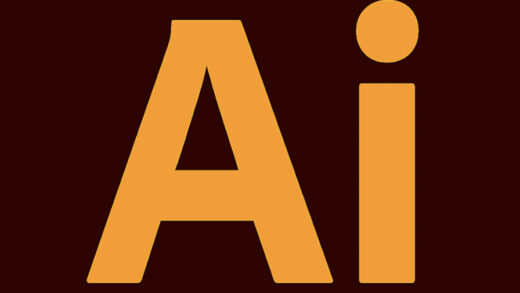Graphic design, which originated in the 1400s, has undergone profound transformations. In the contemporary landscape, no single dominant method reigns, as trends emerge annually with diverse techniques and styles.
The integration of technology now plays a pivotal role in creating digital work across various fields. From portfolio design to presentations, signage, logos, websites, animations, and architectural production, all aspects of graphic design have advanced significantly since the advent of the digital revolution. Let’s delve deeper into the dynamic evolution of graphic design.
Prioritizing User Experience in Design Decisions
While the future of graphic design remains uncertain, recent years suggest that user experience will continue to dominate. Designs will evolve to become more personalized and interactive, prioritizing user engagement. Customized designs that enhance user experience will likely be a prevailing trend, shaping the direction of graphic design in the coming years.
In the present landscape, mobile responsiveness is crucial for websites to adapt to evolving hardware, screen sizes, and resolution. Consequently, graphic, UX, and UI designers lean towards simplicity to ensure faster rendering. Moreover, print advertising has adapted to integrate with mobile devices, offering users immersive and captivating advertising experiences.
Regarding content marketing and social media, graphic designers have embraced a diverse set of new skills to enhance their craft. In the past, creating media for a company primarily focused on effectively conveying the business’s message. Although this remains a significant aspect of graphic design today, there is a multitude of new concepts to explore and incorporate as well.
For example, graphic design now incorporates psychology and buyer behavior. Branding experts delve into the psychology of color and the impact of shapes to ensure that they effectively convey each client’s personality. Additionally, designers no longer create imagery solely for a single platform. Logos, visual identity assets, and graphic design elements must perform equally well on various devices, including apps, mobile devices, and larger screens. This has given rise to new disciplines like “responsive design” to meet the demands of modern multi-platform experiences.
The Prevalence of Video Marketing and Motion Graphics
- As of 2011, approximately 64 percent of people enjoyed faster Internet speeds through home broadband, and this percentage has steadily risen to the present day.
The availability of faster Internet has empowered designers to incorporate features like videos and engage users more effectively on websites. With users uploading countless hours of videos daily, this trend is expected to persist, influencing how videos are utilized in design for the foreseeable future.
- From 2016 onwards, the prevalence of animated elements in designs has surged. Motion graphics have found their way into logos, backgrounds, and typography.
As Flash fell out of favor, designers sought alternatives to create captivating motion on web pages, captivating site visitors, and keeping them engaged.

The Rise of Minimalism in Tastes
In the fast-paced world of today, customers are busier than ever. They seek companies that can convey their personality and intent through the most specific and concise graphics. In the past, companies aimed to make a significant impact with big, bold, and complex logo designs and websites. However, simplicity has become the key to success today. Graphic designers now opt for bolder choices combined with flat graphics and simple shapes. Functionality takes precedence over superfluous design details, and brands are streamlining their core assets while infusing more meaning into each element.
Future Graphic Design Trends: A Glimpse into AI’s Influence
With the integration of artificial intelligence and machine learning into the design realm, it might become feasible to gauge people’s sentiments about a brand without direct inquiries. Sentiment analysis and similar advancements could pave the way for more intuitive design practices.
Artificial intelligence (AI) is revolutionizing how design work is accomplished. In the future, designers will lean towards creative genius, while AI handles much of the labor-intensive aspects of design. Beyond altering the designer’s approach, AI’s influence is already evident in interactive movie videos accessible through apps and websites that provide immersive user experiences.
Firedrop offers an innovative AI-powered website creation experience with its chatbot and AI website builder called Sacha. As you begin, Sacha warmly welcomes you and guides you through a series of questions. Based on your responses, Sacha tailors the design of your website, ensuring a personalized end result by the end of the session.
Graphic Design’s Enhanced Influence on Conversions
Advancements in technology have opened up new avenues for brands to gain online exposure, fostering interactions with clients and consumers. Real-time data analysis allows us to measure the impact of various sources, gauging what drives more traffic and engagement. Digital analysis unveils the content and graphics resonating with the audience, generating media impressions, likes, and saves, leading to higher conversions.
As the Internet takes center stage as the primary marketing platform, companies have made significant investments in content creation for customer communication, data analytics, and real-time feedback from consumers. Content marketing and the evolution of graphic design for digital marketing are witnessing continuous growth and upward trends.
Regardless of whether companies focus on B2C or B2B marketing, employing modern graphic design is crucial to showcase an understanding of their customers and foster loyalty. Even small changes like using hand-drawn images instead of stock photos or animated visuals instead of static pictures can play a pivotal role in transforming prospects into dedicated brand advocates.
The Surge in Company Investments in Graphic Design
The surge in people investing in graphic design companies has been remarkable. Technology has opened up abundant opportunities for brands to gain online exposure. To create lasting and memorable interactions with clients, a compelling image is essential, and that’s where graphic design plays a crucial role.
Moreover, in the online realm, companies can analyze real-time data to discover the most impactful graphical elements for their business. This shift allows brands not only to invest more in designers but also to achieve a higher return on investment. Graphic design has evolved into a global conversation bridging the gap between brands, their customers, and the creative minds shaping their visual narrative.
The Distinctive Methods of Professional Graphic Designers
Similar to many other professions, graphic design has experienced significant transformations throughout the years. Alongside the advancements in digital graphics technology, careers in this field have evolved too. Graphic designers employ diverse techniques to bring their ideas to life, skillfully integrating messages, symbols, and images into their designs. Technology has become an invaluable ally, simplifying the process of receiving creative briefs from clients and translating them into stunning designs. This artistic endeavor revolves around captivating presentations and effective visual communication.
The availability of graphic design software on laptops and mobile apps has revolutionized the way graphic designers operate. This accessibility enables them to work globally from any location, making it convenient for companies to outsource talent without the need for in-house hiring. Graphic designers now have the freedom to work remotely while staying seamlessly connected with their offices. This has given rise to a surge in freelance designers who operate from their creative spaces across the world. Companies have come to recognize the cost-efficiency of this approach compared to hiring in-house designers.
In completing their projects, these designers often collaborate with various stakeholders. While pencils, pens, and ink once dominated graphic design tools, the majority now prefer digital work. To stay competitive in the field, graphic designers pursue associate’s or bachelor’s degrees. Notably, platforms like Fiverr and Upwork have seen a rise in business, connecting companies, sole proprietors, and individuals with creative freelancers to source the required talent.
Training Up in Graphic Design Made Effortless

The internet revolutionized the availability of information, including graphic design education. Over the past decade, online learning has become prevalent, catering to industry veterans and newcomers alike.
- MIT and Harvard offer online education through edX (2012) and Coursera (2011);
- Digital platforms like Udemy (2010), Skillshare, and General Assembly (2011) enable DIY learning
As a result, design education has become more accessible and diverse, expanding the talent pool like never before.
Conclusion
Graphic design plays a pivotal role in visual business communication, applied from smartphone apps to comprehensive brand identities. Despite its evolution, the core objective remains constant. Graphic designers today, just like in the past, offer clients alternative ways to communicate with their audiences. As technology progresses with virtual reality, augmented reality, and more, modern graphic design is bound to keep transforming. Nevertheless, in a user experience-driven world, artists skilled in using imagery and text to evoke emotion and establish connections with their audience will have enduring techniques.





